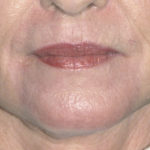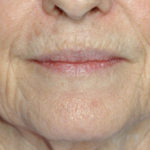One of the features of facial aging that bothers women the most is the development of upper lip lines. Whether they be small fine lines that are at the junction of the skin and upper lip or much deeper lines that extend vertically way up into the skin…women hate them…as they indicate a more aged mouth look and in more severe cases allows lipstick to bleed up into the lines.
Many patients think it is due to smoking and chronic sun exposure (and clearly these can make a big contribution) but the reality is…it is a function of full your lips are and how thick your skin is. This is why this is much more of a problem in Caucasians of northern European and English descent than it ever is in African-Americans, southern Europeans, or those of Mediterranean origins. As all natural wrinkles form perpendicular to the direction and action of the underlying muscles, vertical lip lines develop from the action of the circumferential orbicularis muscle that purses your mouth around a straw, cigarette, or puckers for that kiss.
While the diagnosis of this problem is easy, it’s treatment is not. Since you can’t cure the cause of the lines (thicken your skin or stop moving your mouth), I tell patients to think about improvement (but not elimination of the upper lip lines) and the need for maintenance treatments as we are not curing the root of the problem. Treatment choices are based on three achievable objectives; diminish the muscle movement (Botox), plump up the lips ir fill the lip lines (injectable fillers), or ‘sand’ down the wrinkles. (dermabrasion or laser resurfacing). Any combination of two or more of these will produce a better result in most patients.

Dr Barry Eppley
Indianapolis, Indiana



